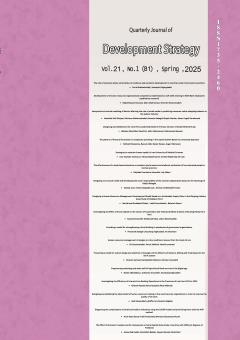Interpretive structural modeling of factors affecting the role of social media in predicting consumer online shopping behavior in the leather industry
Subject Areas :
hamideh seifi shojaei
1
![]() ,
morteza mahmoodzadeh
2
,
hossein Budoghi Khaja Nobar
3
,
Naser Feghhi Farahmand
4
,
morteza mahmoodzadeh
2
,
hossein Budoghi Khaja Nobar
3
,
Naser Feghhi Farahmand
4
1 - Ph.D. student of Business Management, Department of Management, Tabriz Branch, Islamic Azad University, Tabriz, Iran
2 - Department of Management, Tabriz Branch, Islamic Azad University, Tabriz, Iran
3 - Assistant Professor, Department of Management, Faculty of Management, Islamic Azad University, Tabriz, Iran.
4 - Associate Professor of Management Department, Tabriz Branch, Islamic Azad University, Tabriz, Iran
Keywords: Consumer Behavior, Online Shopping Behavior, Social Media, Interpretive Structural Modeling (ISM).,
Abstract :
The purpose of this study is the interpretative structural modeling of factors affecting the role of social media in predicting the online shopping behavior of leather industry consumers.Using the mixed method, the present study presents a qualitative-quantitative approach to formulate and validate the model of factors affecting the role of social media in predicting online shopping behavior of leather industry consumers.The influential factors were identified based on the literature study and review of previous researches and interviews with experts and specialists of the leather industry.In the quantitative part, ISM interpretive structural modeling and MICMAC analysis were used to analyze the data and validate the effective factors from the qualitative method.The results showed that the primary framework of the qualitative model has five indicators, which are: personal factors, situational factors, relationship quality, marketing technology and customer experience. In the ISM graph, the variables were classified in two different levels, in the first level, relationship quality, marketing technology and customer experience, and in the second level, personal factors and situational factors. After MICMAC analysis, the variables of personal factors and situational factors were placed in the dependent area, which indicates greater dependence power and less influence power and in other words, they are both influential and influential. The variables of relationship quality, marketing technology and customer experience were placed between the connected and independent areas. This shows that the variables are mediating and have more influence and direction than other variables.
